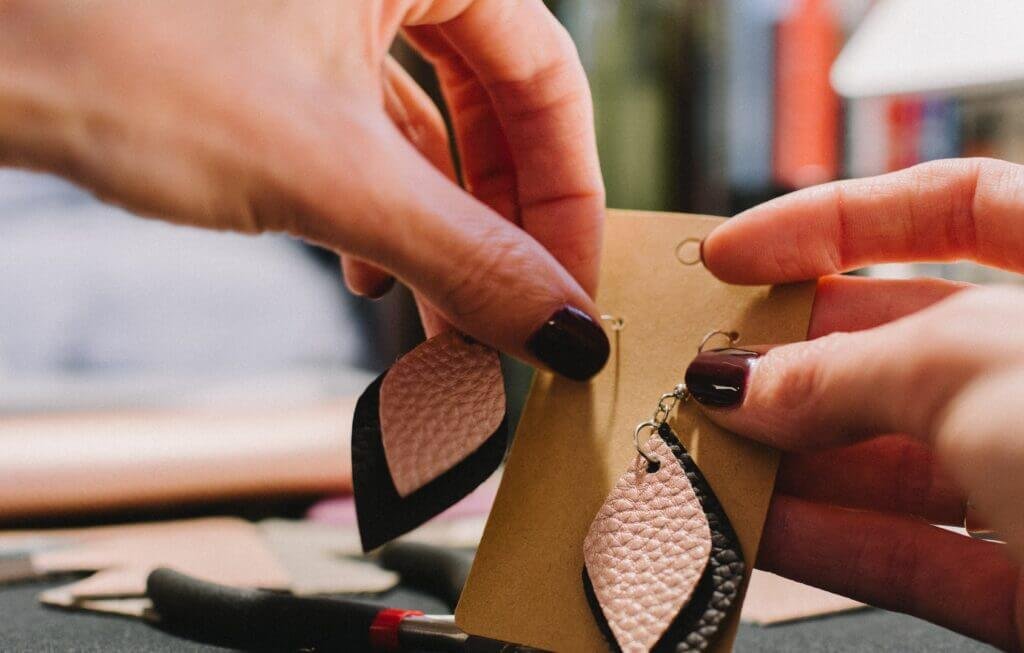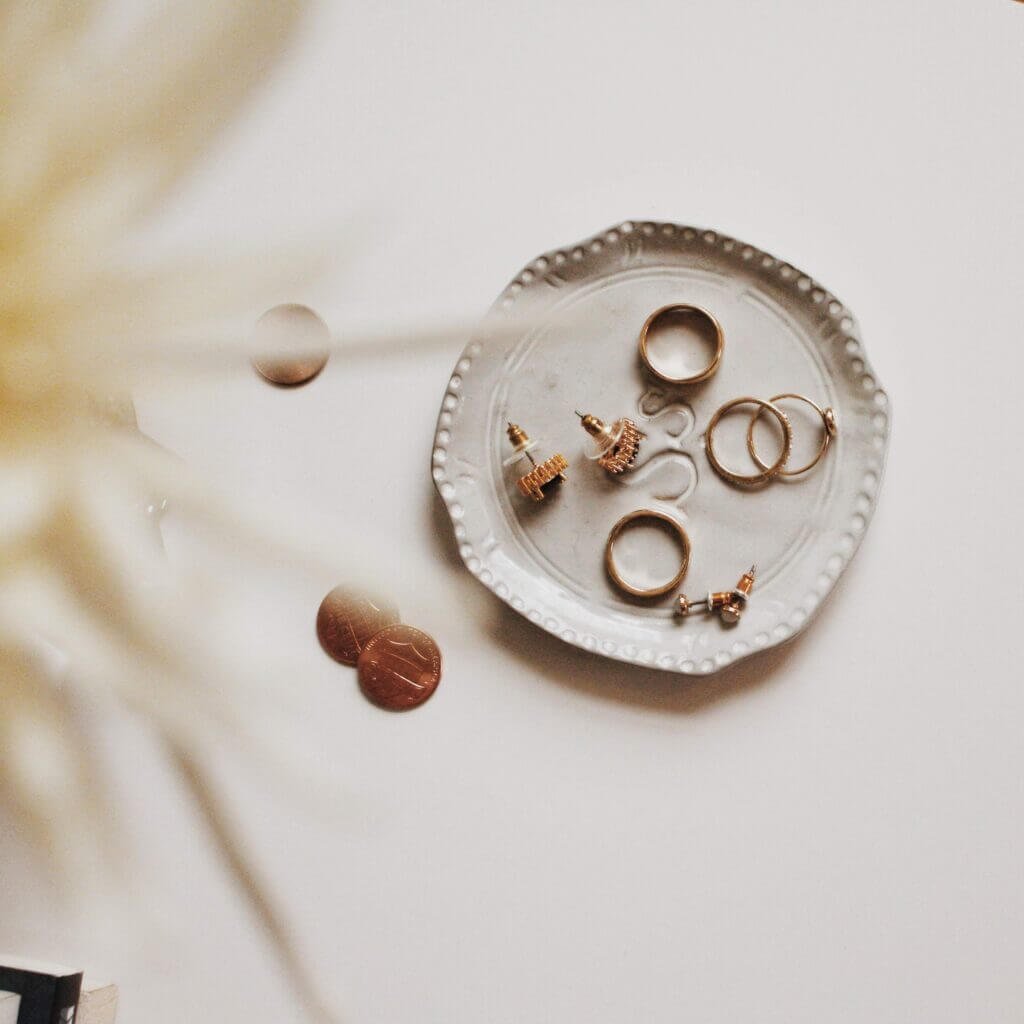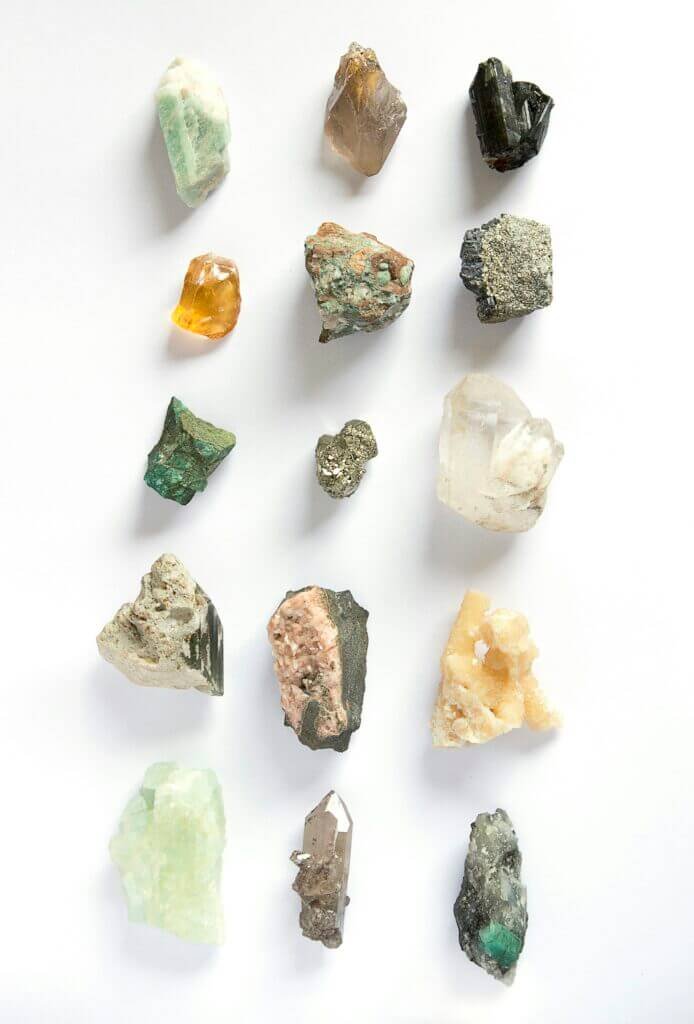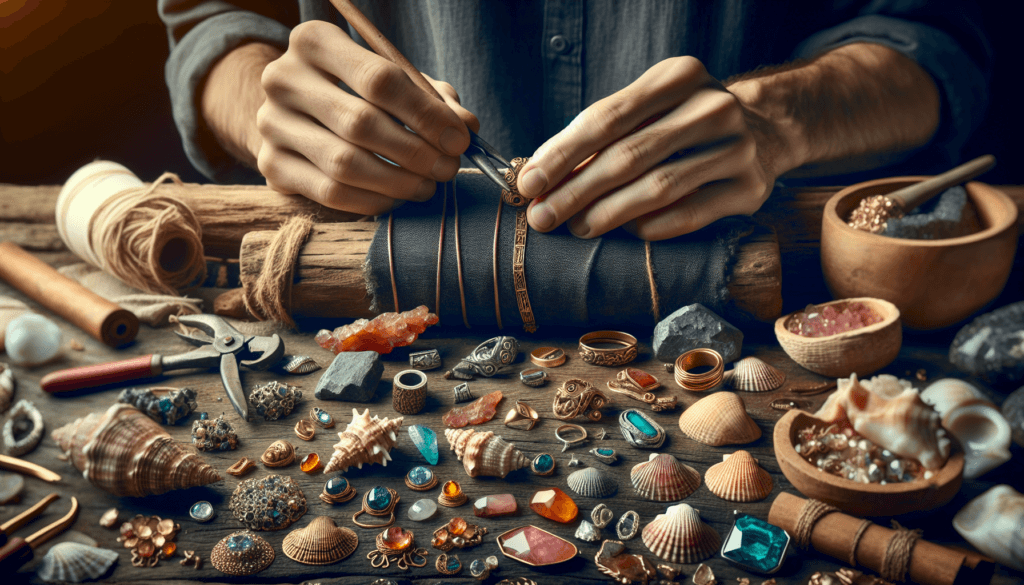What Did Artisans Make Jewelry Out Of?
What Did Artisans Make Jewelry Out Of? Imagine being immersed in the ancient world of artisans, creating stunning jewelry that charms and captivates with its timeless beauty. In this article, “What Did Artisans Make Jewelry Out Of?”, we’ll take you on a fascinating journey through history, revealing the numerous materials artisans utilized to craft exquisite pieces of adornment. From classic, dazzling gemstones to unexpected materials, you’ll gain a new appreciation for the creativity and resourcefulness of artisans of the past. So, prepare yourself to glimpse into their world and learn about what exactly they made their stunning jewelry out of.

Historical Context of Jewelry Making
Human adornment using jewelry dates back to antiquity. This practice has evolved across cultures and eras, colored by varying beliefs, available resources, and artisan skills.
Origin of Jewelry Making
The craft of jewelry making has ancient roots, with the oldest discovered jewelry item, a string of fish bones, dating back to 25,000 years ago. Early humans used readily available materials such as bones, stones, and wood to embellish their bodies, signifying status, strength, or beauty. As civilization grew and tools evolved, techniques refined, leading to diverse designs, materials, and methods in jewelry making.
Evolution of Jewelry Making Techniques
Through time, jewelry making has seen remarkable evolution. Ancient artisans hammered metals into thin sheets and cut out intricate designs, then later discovered casting, where metals are melted and poured into molds. Besides, soldering – the process of bonding metal pieces together – played a vital role in creating complex and dynamic designs. As time progressed, humans started using alloys, creating more durable and varied jewelry.
Notable Artisan Cultures in History
Numerous cultures throughout history are noted for their exquisite craftsmanship, such as the Ancient Egyptians, who were one of the first to establish jewelry making as an art, using gold and vibrant gemstones in their pieces. The Greeks elevated jewelry with their intricate filigree work, while the Indians perfected the art of embedding precious gems into gold. Each culture contributed to the rich history and diversity of jewelry making.
Natural Materials
Natural materials played a crucial part in antique jewelry. They tell us about the wearer’s accessible resources and their relationship to nature.
Bones and Feathers
Bones and feathers were some of the first materials used in jewelry. Bones were shaped into beads and pendants; feathers added rich colors and distinctive textures to hairpieces, necklaces, and ornamental garb.
Wood and Seeds
Wood and seeds offered versatility to our jewelry-wearing ancestors. Seeds of diverse colors and sizes served as colorful beads. Certain woods were valued for their unique patterns, durability, or symbolic significance.
Shells and Corals
Shells and corals have always had a special place in the art of decorating the body. They provided an abundance of natural shells to coastal people, while coral, believed to possess protective properties, was commonly used in Mediterranean jewelry.
Leather and Fibers
Leather and plant fibers serve as bases for pendants or as string for beads. Plant fibers, when twisted or braided into cords, make ideal frameworks for various pieces, from necklaces to tribal headdresses.

Use of Metals in Jewelry
Metals introduced new possibilities to jewelry designs. They provided durability, malleability, and luster that were central to many cultures’ ornamental aesthetics.
Gold Usage
Gold, being resistant to tarnish and corrosion, has been a preferred metal in jewelry due to its longevity and symbolic connotations of power and divinity.
Silver and Copper
Silver and copper offered alternatives to gold. Unlike gold, silver tarnishes but is often preferred for its bright, cool luster. Copper, malleable and abundant, has been used in jewelry for its rich, warm hue.
Platinum and Palladium
These two white metals are prized for their durability and neutrality that make gemstones stand out better. Platinum boasts of a cool, white shine while palladium is light, making it ideal for larger pieces.
Bronze and Iron
Bronze, an alloy of copper and tin, offers hardness and durability, while iron signifies strength and durability.
Metal Alloying Techniques
Alloying, the practice of combining two or more metals, has been a significant innovation in jewelry making. It can enhance a metal’s strength, create unique colors, or reduce cost.
Precious and Semi-precious Gemstones
Gemstones deliver enduring brilliance and color to jewelry. Their rarity, hardness, and beauty contribute to their precious value.
Rubies and Sapphires
Rubies and sapphires, members of the corundum family, are cherished for their outstanding hardness and rich colors. Ruby’s deep red hue has symbolized passion and vitality, while sapphire spans an array of colors, the most famous of which is royal blue.
Emeralds and Diamonds
Emeralds are beloved for their lush green colors, while diamonds, the hardest natural substance, take the crown with their unbeatable sparkle.
Opals and Pearls
Opals captivate with their magical play of color, while pearls, with their soft, understated elegance, have been staples of classic jewelry.
Amethysts and Topaz
Amethyst, a violet quartz, and topaz, coming in various colors, are two of the more popular semi-precious stones. They add stunning colors and brilliance without being excessively expensive.
Quartz and Turquoise
Quartz, in its many varieties, offers a spectrum of colors and clarity. Turquoise, with its distinctive blue-green color, has been cherished in many cultures for its perceived protective qualities.

Beads and Glass
Characterized by vibrant colors, designs, and affordability, glass has been used in jewelry making since ancient times. Is A Jewelry Maker An Artist Or Artisan?
Material Sourcing
Beads come from a wide range of materials – glass, metal, stone, bone. Their sources vary as much as their shapes and sizes.
Bead Shaping Techniques
Beads can be shaped by carving, molding, or machine-cutting. The technique used affects the bead’s final appearance and its suitability for different jewelry types.
Decoration and Design Patterns
Patterns and decorations can be painted, etched, or embedded within the bead itself, giving rise to diverse designs to choose from.
Ivory, Horn, and Bone
These organic materials were commonly used in primitive jewelry but continue to hold appeal due to their natural patterns, strength, and cultural significance.
Source and Procurement
Ivory, horn, and bone can be sourced from various animals. It’s important to note, however, that the procurement of these materials is often under scrutiny for ethical reasons, especially in the case of ivory.
Utilization Techniques
These materials can be carved into beads, pendants, or entire pieces, like bangles or brooches.
Cultural Significance
In many cultures, animal-derived materials are imbued with spiritual or symbolic associations, making their presence in jewelry culturally significant.

Precious and Rare Woods
Precious woods, prized for their beautiful patterns, hardness, and scent, introduce an organic, warm element into jewelry pieces.
Mahogany, Ebony, and Teak
These woods are known for their hardness and rich, dark color. Mahogany has a reddish hue, ebony has a deep black color, and teak is popular for its golden-brown shade.
Burl and Harewood
Burl, marked by its intricate grain patterns, is highly sought after for its unique look. Harewood, pale with subtle streaks, offers a refined, lighter color.
Carving and Combining Techniques
Wood can be carved into intricate shapes, polished for smooth finishes, and combined with metal or gems for contrast and variety.
Ceramic and Clay
Ceramic and clay offer vast pottery techniques to create statement jewelry pieces that are often hand-painted, molded, or carved.
Use of Clay and Porcelain
Clay and porcelain are often shaped and then fired to create durable, beautiful pieces of jewelry.
Firing and Glazing Techniques
Firing transforms a soft clay piece into hardened pottery. Glazing not only makes pieces shiny but also increases their strength and resistance to water.
Molding and Sculpturing Processes
Through molding and sculpturing, artisans can create highly customized and intricate designs.

Fabric and Thread
These materials bring warmth and familiarity to jewelry items. They are used in beadwork, embroidery, and in combination with other materials.
Silk and Wool
Silk and wool are used for their comfort, color options, and luxe appeal.
Cotton and Linen
Cotton and linen offer a more casual feel and are often used as cords or in beadwork.
Embroidery and Weaving Techniques
Embroidery and weaving in jewelry incorporate small and delicate patterns into larger fabric pieces.
Contemporary Materials
With technological advancements, modern jewelry incorporates unique, innovative materials.
Resin
Resin, a synthetic polymer, allows artists to embed materials, suspend objects, or create a glass-like effect.
Silicone
Silicone is favored for its flexibility, range of colors, and ease of cleaning. https://www.aigsthailand.com/
Polymers and Plastics
Polymers and plastics provide affordability, durability, and virtually unlimited color options.
Innovation in Jewelry Materials
Many new materials, such as recycled or sustainable materials, are increasingly popular, appealing to both environmental and fashion-forward sensibilities.
As you can see, the long history of jewelry making is marked by significant cultural, artistic, and technical evolutions. Still, at its heart, it remains an art form that is as much about personal and cultural expression as it is about aesthetics.



